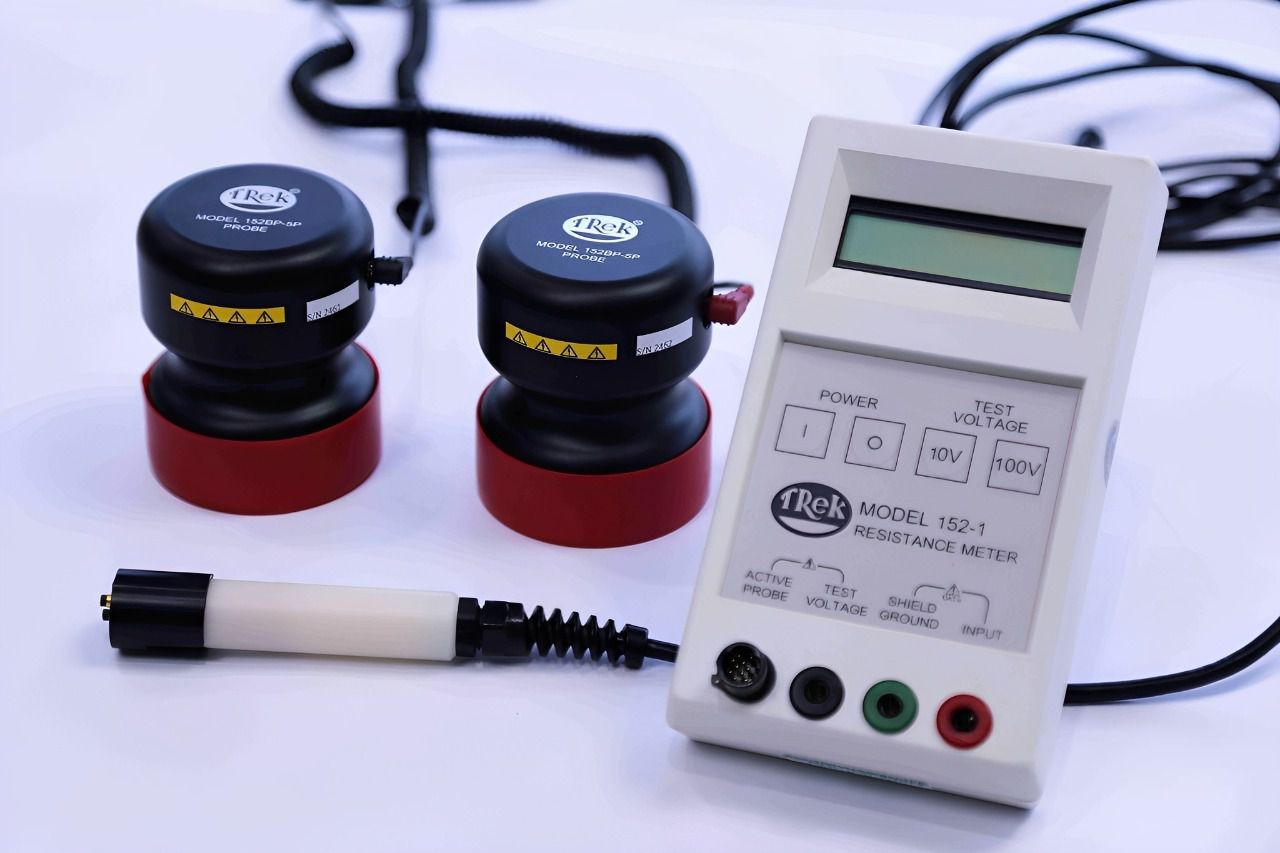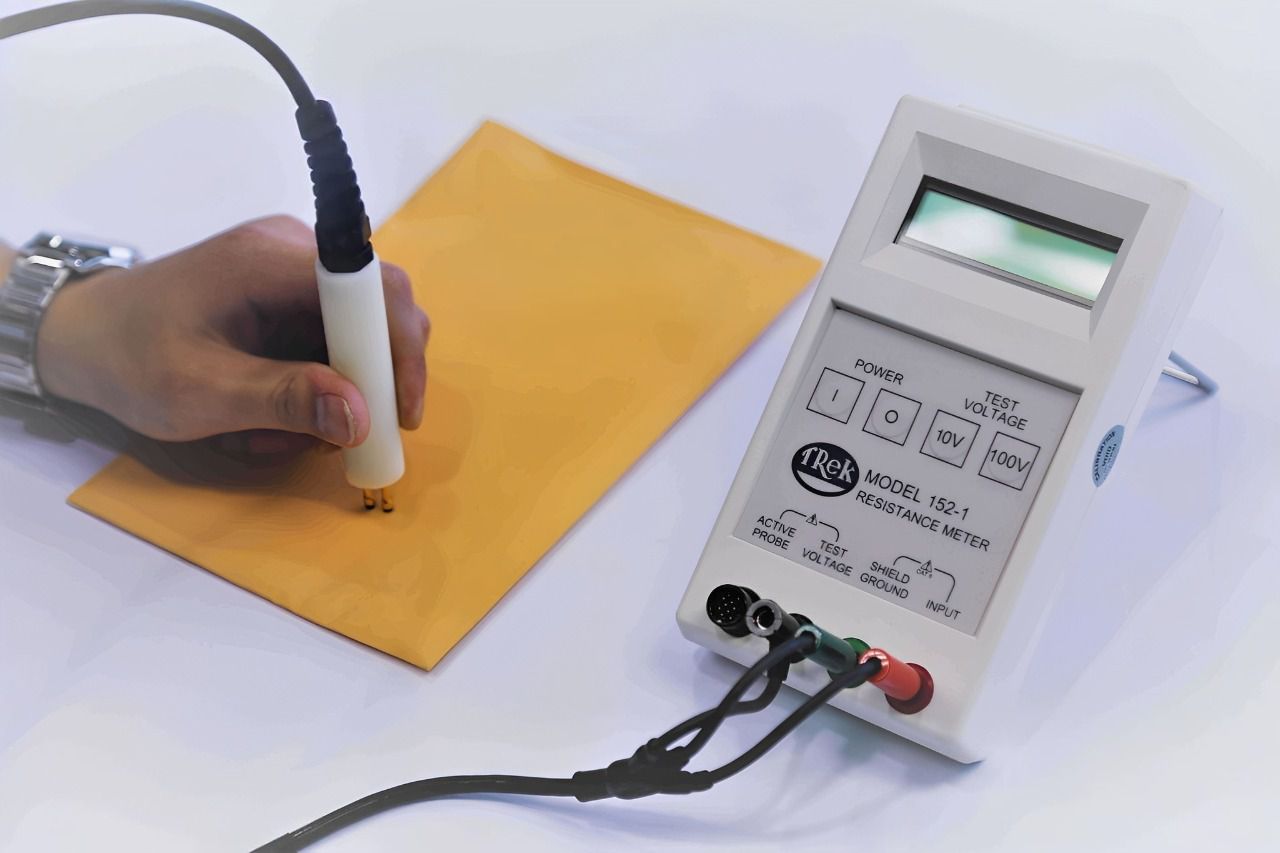Surface resistance meter
When to Use a Surface Resistance Meter?
In electronics manufacturing, cleanrooms, or laboratories, static electricity accumulated on material surfaces can damage sensitive components, disrupt production processes, or even pose fire and explosion risks. To control this issue, surface resistance meters are used to accurately determine the conductivity or insulation of materials, thereby reducing risks and ensuring safety.

Surface Resistance Meter: Ensuring Safety for Factories, Workshops, and Laboratories
A surface resistance meter is a specialized instrument used to measure the conductivity or insulation of material surfaces, from anti-static coatings to materials used in the production of sensitive electronic components. The device operates by measuring the current flowing across the surface and calculating the resistance in ohms per square.
Surfaces That Require Surface Resistance Measurement
Using a surface resistance meter is essential for surfaces related to static control or requiring stable electrical conductivity, such as:
Cleanroom surfaces: Workstations, mats, and coated materials in cleanrooms need resistance testing to ensure no static buildup that could damage sensitive electronic devices.
Electronic component manufacturing surfaces: Printed circuit boards (PCB) and semiconductor components must meet specific surface resistance standards to maintain electronic stability.
Floors, shelves, and carts in industrial environments: These surfaces must maintain proper resistance levels to prevent dangerous electrostatic discharge (ESD).
Key Factors When Choosing a Surface Resistance Meter
- Measurement range and accuracy: The meter should provide a suitable measurement range, typically from 10^3 to 10^12 ohms/square. Higher accuracy ensures more reliable results for technical applications. The Trek 152-1 model is often chosen by technicians and quality managers for quick surface checks of electronic components or anti-static materials.

- Test voltage: Commonly from 10V to 100V, compliant with international standards for surface resistance measurement.
- Electrode design: Some meters come with built-in electrodes, while others allow external probes for hard-to-reach areas.
- Data storage and display: Features such as data logging and clear digital displays improve usability and accuracy.
- Battery life and portability: Long battery life and compact design allow convenient use across different locations.
- Using this device not only ensures accurate measurement but also helps effectively control factors affecting production and equipment operation. Exploring genuine surface resistance meters at EMIN from well-known brands such as KLEINWACHTER, PROSTAT, and TREK will help you select the right model, improve quality, and minimize risks for your projects.
-
-
-
-
-
-
-
-
-
-
-
-
-
-
-
-
-
-
-
-
-
-
-
-
